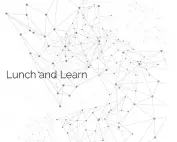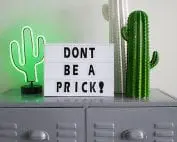How today’s visionaries employ mindfulness
Mindfulness is the buzzword across a diverse array of industries. Even the US Department of Defence has embraced mindfulness meditation. What is it about this ancient practice that has the biggest names in commerce, finance, technology, and science extolling its virtues, and what can it do for you?
0 1
What is mindfulness?
According to Sam Harris, neuroscientist, author, and meditation expert, “Mindfulness is simply a state of open, nonjudgmental, and nondiscursive attention to the contents of consciousness.” Research indicates mindfulness improves our ability to focus, think, feel, and behave. By managing how we apply our attention, we become fully present for the task at hand.
You may be working from your kitchen table right now or from your living room. One of our new realities is people work from wherever they can. It can be difficult to maintain focus without the traditional distinction between work and home life. Mindfulness can help you focus when you need to be productive during the day, and it can provide a means to disconnect from work when your sofa transitions from your workspace to your home space.
A recent article in Forbes describes how mindfulness does more than merely shift your mental state, “it constructively alters our perception of reality.” As we practice mindfulness more regularly, it moves cognitive control to our frontal brain regions, the regions most recently developed through evolution that are responsible for reason, rationality, and our ability to regulate ourselves. This cognitive shift enables you to perceive without the emotional reactions that can cloud judgment.
In the workplace, this translates to more control over our words and our actions. We are less inclined to be reactive and possess more clarity of thought. We are better with time management because we’re more aware of what we’re doing and what needs to be done. Mindfulness can help us become the consistent, reliable co-workers people gravitate towards as natural leaders.
Mindfulness: Take time to empty your head
“If you just sit and observe, you will see how restless your mind is. If you try to calm it, it only makes it worse, but over time it does calm, and when it does, there’s room to hear more subtle things.” – Steve Jobs
0 2
How to Cultivate Mindfulness at Work
Mindfulness is something you can learn. According to a recent article in The Atlantic, companies such as Google, Intel, Adobe, and Goldman Sachs are offering mindfulness seminars for their employees. More than half of large corporations provide their employees with a form of mindfulness training. Mindful exercises can reduce stress by having workers focus on the present moment and what needs to be accomplished.
Mindfulness begins by letting go of your thoughts, plans, and concerns as much as you can and focusing on one thing. Beginners generally start by focusing on their breath.
Mindfulness and meditation are a start, but it’s not all about breathing. There are other facets to mindfulness for maximizing productivity. It begins the moment you wake up. Many people look at their emails first thing in the morning. If you begin your day with a five-minute mindfulness exercise instead of your inbox, you will already be more focused.
Stop multitasking. According to the Harvard Business Review, productivity drops up to 40% when we try to multitask because we are actually switch-tasking. Your attention gets fragmented. Single-tasking and focusing on priorities is a more effective way of being productive.
Focusing, prioritizing, and then setting your attention to a single task is more conducive to a flow state, where you are immersed in your task and produce far greater results. Mindfulness can get you in the zone where you’re at peak performance and engaging in deep work.
If you’re new to meditation, here’s some recommendations from expert Sam Harris
-
- Sit comfortably with your eyes closed.
- Take in a few deep breaths and feel the sensations of sitting, the pressure of the chair on your back or legs, the warmth of your body. Simply observe.
- Gradually focus more on breathing. Pay attention to where you inhale at the nostrils or feel the rise and fall of your abdomen.
- Breathe normally and let your attention rest on the sensation of breathing.
- Every time your mind wanders away in thought, gently return it to the focus on your breath.
- Continue in this way and observe the ambient noise and sensations around you — people talking, cool air, doors shutting, phones beeping. Observe and return to the breath.
- There is no finish line for meditation. Try it and set a timer for five minutes at first. Try moving to ten when you’re ready. You can meditate several times a day or whenever you feel you need it.
“US managed health company Aetna estimates that since instituting its mindfulness program, it has saved about $2,000 per employee in healthcare costs, and gained about $3,000 per employee in productivity.” — The Atlantic
0 3
How to Use Mindfulness to be a Better Leader
When business leaders discuss mindfulness, several words consistently pop up: focus, productivity, and resilience. The first two are expected, but the last one is surprising.
Mindful work practices, especially in leadership positions, help eliminate some of the stress and distractions that zap our energy. We also feel more capable of tackling challenging tasks and difficult decisions. Mindfulness provides clarity on what’s important so we’re less likely to feel overwhelmed.
The Center for Creative Leadership has worked with many large companies on their mindfulness practices. They describe four fundamental skills of mindful leaders:
- Focus – During mindfulness training, participants learn to focus their attention on something specific, and then notice when their attention has wandered and redirect it. This prepares you for sustained attention when problem-solving.
- Clarity – As we practice mindful leadership, we see our own conditioning, biases, and filters. We learn to see what is, not what we hoped to see.
- Creativity – When we’re flooded with tasks and busywork, we have limited space for creativity. Mindfulness creates space for creativity and innovation. Sometimes it’s applying focus somewhere else. For example, Albert Einstein would regularly take breaks from his work in physics to play his violin and then return to work and see things differently.
- Compassion – Mindful leaders make choices with the understanding that we are all in this together. They demonstrate empathy and think about the ramifications of their choices and actions.
Mindful leaders practice Active Listening in the office. They pay specific attention to not only what colleagues and employees say, but how they say it, and what their body language is like. Leaders who are poor listeners are often perceived as arrogant and are less likely to have engaged employees.
When we listen with focus we also Empathize more. Empathy is viewed by employees as one of the most desirable leadership traits. Employees want leaders who understand them and their challenges.
Mindful leadership goes hand in hand with Emotional Intelligence or EQ. Good leaders are sensitive to the thoughts and feelings of their team. They can provide emotional support when needed and understand the necessary balance between personal and professional.
Mindful leaders are self-aware and regulate themselves. They are aware of how they behave and how others perceive that behavior. They are also more aware of their strengths and weaknesses. Teammates and employees see this kind of leadership as more authentic and people are more apt to follow authentic leaders.
It’s easy to give in to stress and move through your day on autopilot, but this can prove detrimental to both your personal and your work life. Taking a few minutes to focus and prepare your mind can provide you the mental space to be more creative, innovative, and productive. We need clear-headed leadership now more than ever and mindfulness is a useful tool for any business executive.
Key takeaways
- Mindfulness involves focusing the mind and observing, not judging.
- Mindfulness helps productivity by eliminating distractions, prioritizing tasks, and then single-tasking.
- Mindfulness practices can be done anywhere.
- Big corporations are using mindfulness to lower costs associated with employee health.
- Mindfulness can be learned and promotes listening, empathizing, and being authentic.
Common Questions
- Get organized by understanding what you need to do and how you’ll do it.
- Remove distractions such as TV and social media.
- Set specific goals. A vague plan is easier to delay than a specific one.
- Take breaks as needed. Yes, you have work to do but allow yourself an hourly stretch.
- Give yourself a deadline for completion.
- Reward yourself when you complete the task. Have a snack or watch an episode of your favorite show.
A flow state is where a person is fully immersed in a feeling of energized focus, It is also known as being in the zone. You can use the attention management techniques outlined above to hone your focus on what needs to be done and immerse yourself in the task.
According to the Harvard Business Review, productivity can drop up to 40% when we multitask. This is because we are switch-tasking, not multitasking. Your attention is splintered between the different jobs you’re trying to complete in your workday. Single-tasking and remaining focused is a more effective way of being productive.
If you don’t reach a goal, reassess the situation.
- Why didn’t you reach the goal?
- What were your obstacles?
- What can you change?
- Can you be more productive?
- Was the goal attainable?
Take all of this into consideration and use the information to inform setting a new goal.
A recent article in Forbes Magazine outlined four steps for leveraging Attention Management to increase your productivity:
- Let go of others’ expectations: Prioritize your work, and don’t be reactive. Answer emails, texts, and voicemails when it is convenient for you.
- Don’t over-schedule: Plan downtime in between meetings to sort through notes and plan your next steps.
- Turn off notifications or Turn on Focus Features: Place your devices aside. Schedule regular message checking times throughout the day.
- Begin your day in your task list instead of your email: You can check your email after you’ve reviewed your plan for the day and know what you need to do.
In a recent article, Business News Daily identified three lesser-known traits of self-awareness:
- Empathy – Understanding how others see you, provides a heightened emotional intelligence to those around you.
- Adaptability – Knowing how you will react or behave allows you to pause and adjust.
- Confidence – Identifying your flaws, needs, and strengths enables you to see areas you can improve and focus on, which builds stronger relationships in the workplace.
It’s a term created by Cal Newport, renowned author and computer science professor at Georgetown University.
“Professional activity performed in a state of distraction-free concentration that pushes your cognitive capabilities to their limit.”
Brian Abbey is a freelance writer with 25 years experience in tech, marketing, higher education, and startups. An American, now living in Romania, he creates content for multinational firms in Asia, Europe, and the United States, garnering over 100K readers on topics ranging from medical trends to artificial intelligence and university student engagement.
This is one of our executive briefings taken from our series of professional online business short courses from ELL. We have over 100 courses online with over 1,000 hours of e-learning covering a wide range of topics across leadership, management and personal & professional development created by industry experts and learning professionals.
Mindfulness Course
Mindfulness is a fundamental mental, psychological and emotional skill that you should constantly evolve as you move through your life. Improving your mindfulness allows you to be more aware of your actions as you become more aware of your immediate environment. It helps you self-regulate and provide benefits through your career and life. You will improve your active listening skills, filtering and gratitude, all of which will help increase your ability to be present in every moment.
y the end of this short course on mindfulness, you will:
- Understand what mindfulness is and how it can directly benefit your everyday life
- Learn practical skills in practicing mindfulness from active listening to developing attention, acceptance and scanning
- Understand and defeat cognitive distortion and its causes
- How to cultivate high performance emotions
In each of our business courses, you get access to around six hours of e-learning that you can watch, listen and read. There are usually 100 questions and at the end of the course you will receive a certificate of completion that you can use against any personal or professional development requirements. As well as the course, you also receive a FREE e-book that you can read on your Kindle or other e-reader. You also get a FREE audiobook of the course so you can listen to the whole course uninterrupted on your device.















